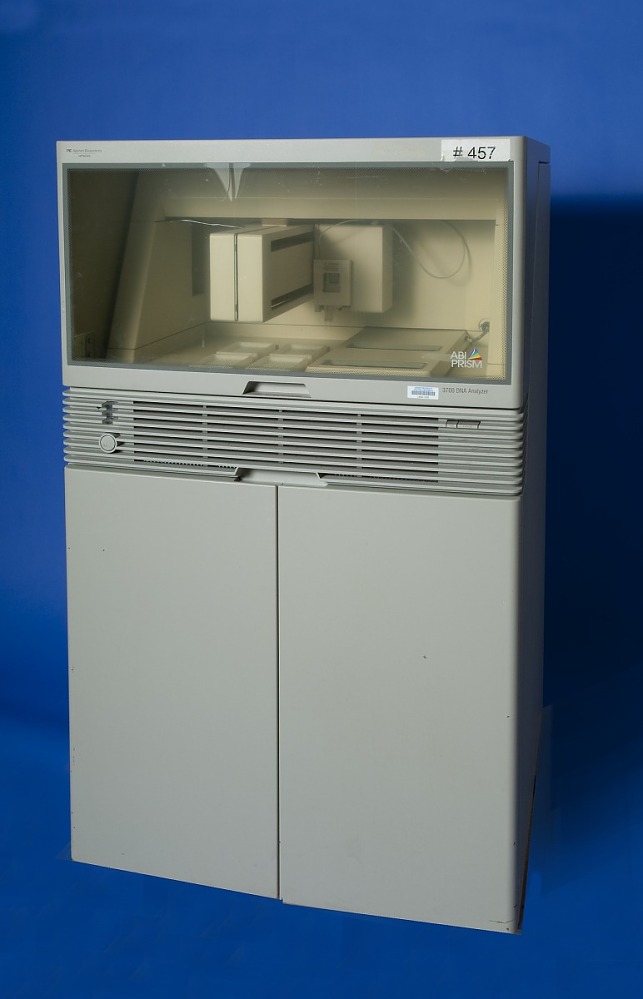Capillary Sequencing and the Human Genome Project
Object | Letter by Letter
In 1995 a new machine for DNA sequencing was released to the market, which still used electrophoresis but pulled DNA through tiny capillaries rather than across a gel plate. Capillary sequencing was a more automated process, meaning that it required less input and supervision from technicians to set up each run of the machine. The machines were also developed to sequence more samples at a faster rate than previously possible.
It is not a coincidence that this technological advance happened in the midst of the Human Genome Project. There was huge financial investment behind the project, and biotechnology companies were closely aligned to its demands. This was not always a straightforward relationship; with project researchers pushing for more open access, and companies seeking to protect their investments.
In 1998 the Human Genome Project committed to the new method of sequencing, upgrading its fleet to the new ABI 3700. This technology was also used by Celera Genomics, who entered the field in the same year, stating that they would beat the public project to complete the genome – but at the cost that it would not be freely available. With increased funding to scale up work on the sequence using the new capillary method, the project shaved about five years off of its schedule.
